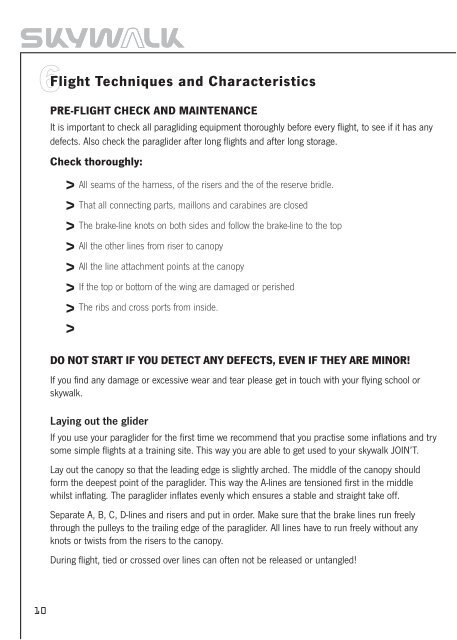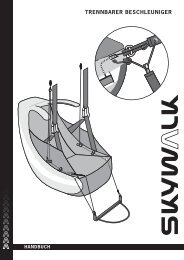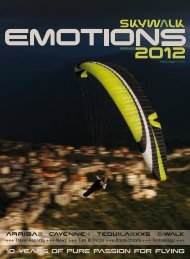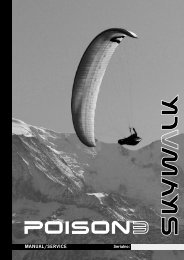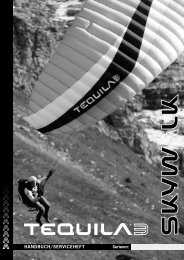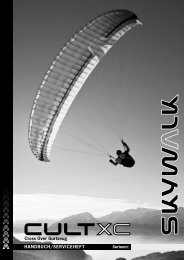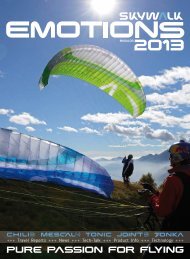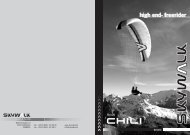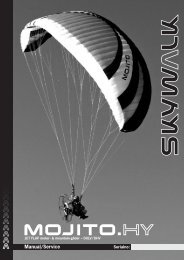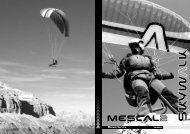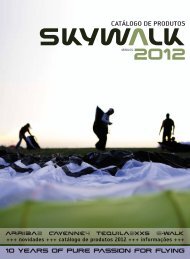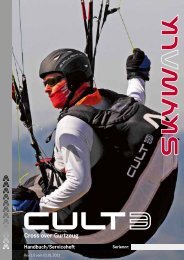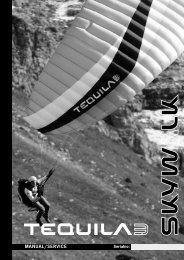JOIN'T_E - Skywalk
JOIN'T_E - Skywalk
JOIN'T_E - Skywalk
You also want an ePaper? Increase the reach of your titles
YUMPU automatically turns print PDFs into web optimized ePapers that Google loves.
6Flight Techniques and CharacteristicsPRE-FLIGHT CHECK AND MAINTENANCEIt is important to check all paragliding equipment thoroughly before every flight, to see if it has anydefects. Also check the paraglider after long flights and after long storage.Check thoroughly:All seams of the harness, of the risers and the of the reserve bridle.That all connecting parts, maillons and carabines are closedThe brake-line knots on both sides and follow the brake-line to the topAll the other lines from riser to canopyAll the line attachment points at the canopyIf the top or bottom of the wing are damaged or perishedThe ribs and cross ports from inside.DO NOT START IF YOU DETECT ANY DEFECTS, EVEN IF THEY ARE MINOR!If you find any damage or excessive wear and tear please get in touch with your flying school orskywalk.Laying out the gliderIf you use your paraglider for the first time we recommend that you practise some inflations and trysome simple flights at a training site. This way you are able to get used to your skywalk JOIN’T.Lay out the canopy so that the leading edge is slightly arched. The middle of the canopy shouldform the deepest point of the paraglider. This way the A-lines are tensioned first in the middlewhilst inflating. The paraglider inflates evenly which ensures a stable and straight take off.Separate A, B, C, D-lines and risers and put in order. Make sure that the brake lines run freelythrough the pulleys to the trailing edge of the paraglider. All lines have to run freely without anyknots or twists from the risers to the canopy.During flight, tied or crossed over lines can often not be released or untangled!10


